How the first Falcon almost brought Ford to its knees in Australia
Ford’s first Falcon was sleeker, smoother, more powerful and lighter than its main Holden rival, but the weight of one flaw almost crushed Ford Australia. What went wrong?
VIC News
Don't miss out on the headlines from VIC News. Followed categories will be added to My News.
Ford Australia was convinced it finally had a car good enough to defeat the might of General Motors Holden when it unveiled the first Ford Falcon in September 1960.
But it was a costly mistake that took Ford Australia many years and millions of dollars to recover.
The Falcon story starts when Ben Chifley stood proudly beside Holden’s 48-215 at the company’s Fishermans Bend factory in 1948.
Both Ford and Holden had plans to develop an indigenous Australian car before World War II derailed everything, and with Federal Government support, Holden was out of the blocks with a design from its US sibling, Chevrolet.
Fast forward to 1958, and roughly one in every two new cars sold in Australia was a Holden. The company was riding high on post-war prosperity and Aussie pride, and Ford wanted a piece of the action.
Ford Australia boss Charlie Smith knew that full Australian car production was the way ahead, and Ford was constructing a big new assembly plant at Broadmeadows in Melbourne’s north.
On the advice of its parent company, Ford of Canada, Ford was gearing up to build a restyled version of the ageing Ford Zephyr.
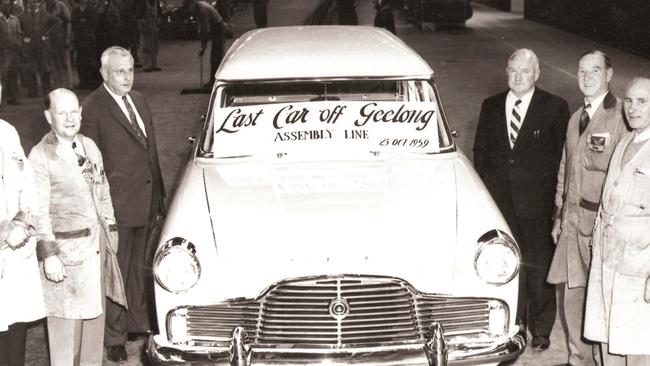
Smith and a team of executives travelled to Detroit to view the Zephyr in July 1958, but Smith took one look and rejected the mock-up the stylists presented.
He was then shown the design for the forthcoming North American compact model codenamed 19XK Thunderbird, the future Ford Falcon, which was due to hit the streets in North America in March 1960.
Smith loved it. The Zephyr was dumped in favour of what became known in Australia as the XK Falcon — a car that made its future main rival, the FB Holden, look ancient.
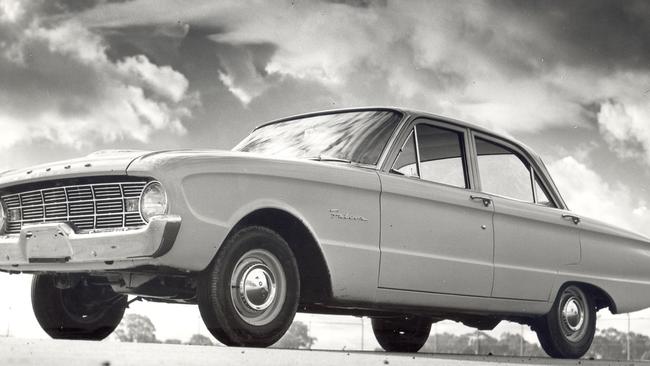

The Holden, launched in January 1960, was bigger and slower than the FC Holden it replaced.
It had Chevy-inspired tailfins with a high roof and a 1950s-style wraparound curved windscreen.
The Falcon sedan was a sleek, low-slung car with a distinctive concave grille and slim door and roof pillars that gave the new car great all-round visibility.
The Ford came with a lightweight 144-cubic inch (2.4-litre) straight six engine that was larger and more powerful than Holden’s 132-cubic inch (2.2-litre) unit, the same basic engine it introduced with the 48-215.
The Ford came with a standard three-speed column-shift manual or a two-speed “Fordomatic” auto. It was another year after the Falcon was unveiled before Holden could match that.
The sedan was released in September 1960. The Falcon wagon followed in November, with ute and panel van versions hitting the road in May 1961.
In its first road test of the Falcon sedan, Wheels magazine sang its praises and predicted a bright future.
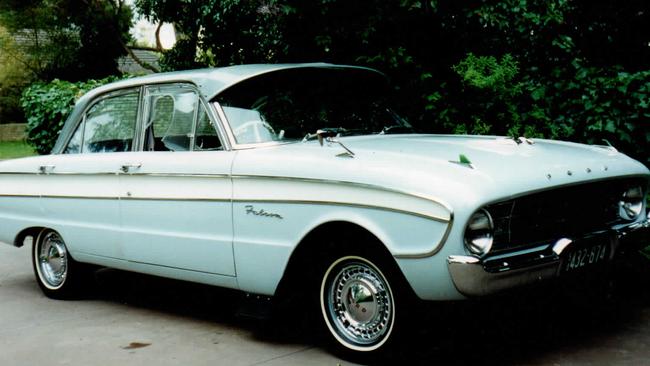
“An excellent car in practically every respect, this Ford is going to win lots of friends because of its nice feel, ample performance, and because, for the first time since 1948, Australians are being offered the type of car they want without it having to be a Holden,” it said.
“The cards are by no means stacked against the Holden since it has a whole list of more desirable features, such as higher geared steering a better turning circle and a slightly shorter overall length.
On the other hand, the Falcon is a car designed for this year, unlike the Holden which is a rehashed version of an already long-established model. Just how the public will receive the Falcon we must wait and see, but I think a lot of people are going to be happy.”
The first Falcon rolled off the production line at Broadmeadows on June 28, 1960 — less than two years after Smith and his team first saw the Falcon design in Detroit.
That short lead time and the lack of an Australian proving ground meant that virtually all the development work for the car had to be completed in the United States.
There was some consideration in the new Falcon for local conditions.
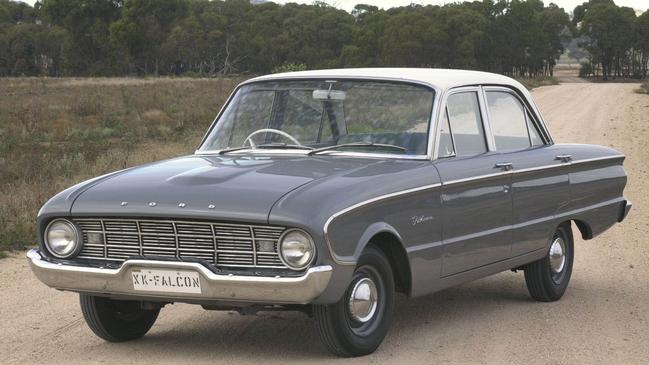
Ford Australia redesigned the back end of its wagon, ute and panel van to cut overhang present in the US models and raised the ride height so the local versions could cross spoon drains and traverse rough roads.
But Aussie Ford engineers’ concerns about front suspension weren’t considered by the Detroit engineers.
At the dawn of the 1960s, long stretches of some intercapital highways were not sealed, and many sealed roads were poorly formed.
Some owners reported the ball joints of their shiny new Falcons were collapsing among a list of suspension issues.
Ball joints are a vital component in the steering and front suspension, connecting the suspension and the front wheels.
The front suspension sagged some early models, too.
The issue was rectified pretty quickly, with many Falcons refitted with “heavy duty” suspension from its tried and tested locally-built Fairlane, but damage to Falcon’s reputation and Ford’s bottom line was done.
The problems didn’t affect all Falcons, but enough were affected to earn the new Ford the nickname “Foulcan”.
Sales slumped. Holden’s dominance remained intact.
Even the addition of a vastly more powerful Pursuit 170 cubic inch (2.8-litre) six as an option late in the XK’s life failed to stem the red ink as Ford spent much more money than planned to fix the XK’s quality problems and to improve future cars.
And it took years for the brand to recover.
Just over 68,000 XK Falcons were sold between June 1960 and August 1962. Holden sold 147,747 FBs from January 1960 to May 1961 alone.
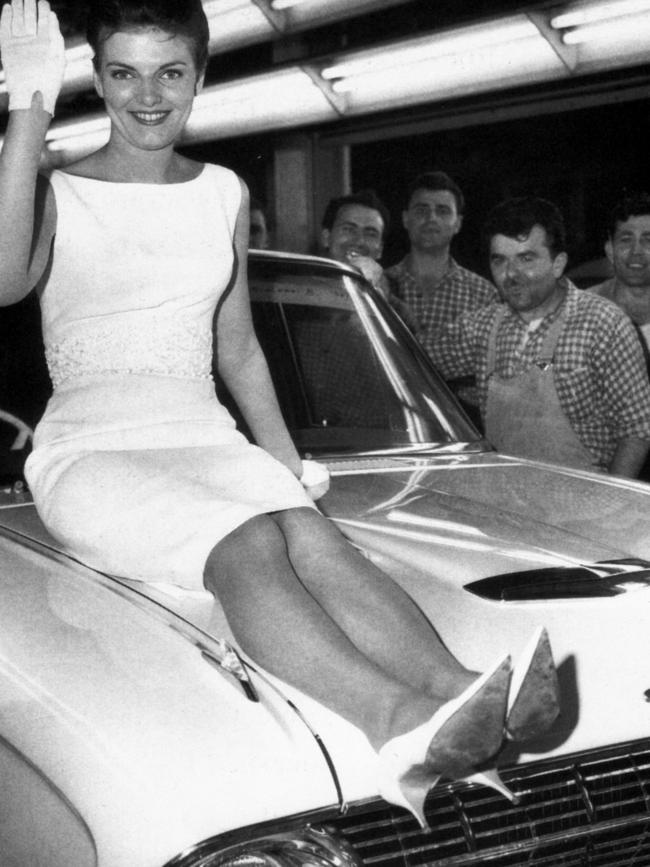

An update, the XL Falcon, billed as “Trim, Taut, Terrific”, was released in August 1962.
The XL boasted standard heavy-duty suspension, and upgraded clutch and brakes among 734 new parts, a new grille and a more squared roofline. Luxury Futura and Squire Wagon models (the latter with all-American fake wood panels) were introduced.
Racing drivers Harry Firth and Bob Jane drove an XL to victory ahead of three other Falcons in the Armstrong 500, the forerunner to the annual Bathurst classic, at Phillip Island. The cars triumphed on a track surface that was breaking up badly.
Still, sales were listless, and Ford suddenly had stockpiles of thousands of unsold Falcons in a market that was invigorate3d by the EJ and EH Holdens and the Aussie-built Chrysler Valiant.
But Ford was in deep and in it for long haul.
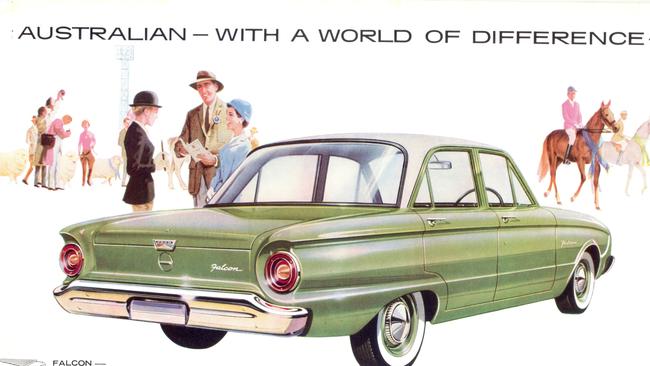
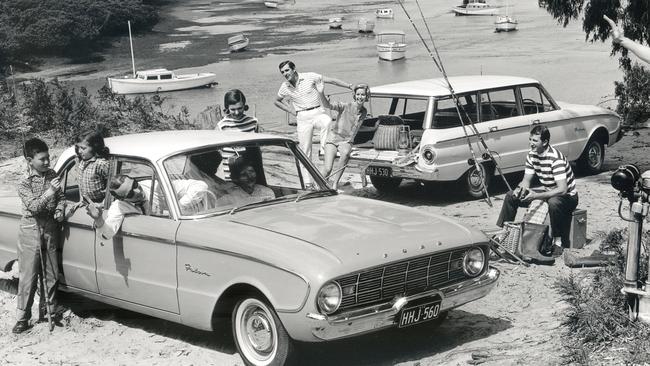
The XM Falcon, followed in February 1964. A new Super Pursuit 200 cubic inch (3.3-litre) six, a two-door coupe and even tougher front suspension were introduced, and its advertising boasted “certified golden quality”.
The car looked much more modern and on paper was streets ahead of the EH Holden, but its sales languished behind the Holden.
Meanwhile, in the hills outside Geelong, Ford was building a new proving ground.
In 1965, in one of the most insane promotional events in world automotive history, Ford set up a 70,000-mile (112,000km) durability trial.
MORE:
LESSER-KNOWN GREAT AUSSIE CARS
Ford handed the keys to five standard XP Falcons to a gaggle of racing drivers and ordered them to fling the cars up and down the company’s new, steep proving ground road circuit at an average of at least 70mph (112km/h) 24 hours a day until the five covered a combined 70,000 miles.
And then they invited Australia’s press to watch. What could possibly go wrong?
Nothing. Despite bashes and crashes, the five cars all completed their assigned task in a stunning marketing coup that proved how sturdy the Falcon was.
Then, in 1965 and 1966, the XP and XR Falcon won back-to-back Wheels Car of the Year awards, and the Falcon never looked back.


